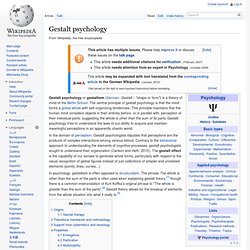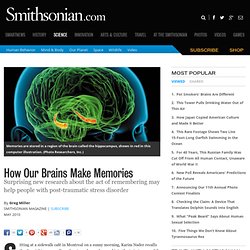

EDpuzzle. SleepTiming: Sleep Calculator. Ball Girl Makes Amazing Catch. Claim: Video shows a ball girl making an amazing catch at a minor league baseball game.

Example:[Collected via e-mail, June 2008] Is this foul ball catch by a ball girl in a Triple 'A' baseball game between Fresno and Tacoma for real? It appears hard to believe. As she climbs what appears to be about up the wall to make the catch, she's not even looking back at the ball... Amazing... Origins: The video clip linked above was purportedly taken during a minor league baseball game between the Fresno Grizzlies and the Tacoma Rainiers. " ... Is it real game footage? Gatorade ended its association with the agency that created the ad, shortly after the video was completed and shelved the campaign. "We were not planning to release the ball girl video," [Gatorade spokeswoman Jill] Kinney said.
Kinney said Gatorade doesn't know who posted the video, and said on its website that it had nothing to do with posting the video. Optical illusions bare. How do Optical Illusions Work. Memory diagram. Introduction to Psychology 1.0. Another way of understanding memory is to think about it in terms of stages that describe the length of time that information remains available to us.

According to this approach (see Figure 8.4 "Memory Duration"), information begins in sensory memory, moves to short-term memory, and eventually moves to long-term memory. But not all information makes it through all three stages; most of it is forgotten. Whether the information moves from shorter-duration memory into longer-duration memory or whether it is lost from memory entirely depends on how the information is attended to and processed.
Sensory Memory Sensory memoryThe brief storage of sensory information. refers to the brief storage of sensory information. Visual sensory memory is known as iconic memoryThe visual sensory memory.. Figure 8.5 Measuring Iconic Memory Sperling (1960) showed his participants displays such as this one for only 1/20th of a second. Source: Adapted from Sperling, G. (1960). How We Make Memories - Crash Course Psychology #13. Memory - Mapping Memory 3D Interactive - National Geographic Magazine. Lessons Worth Sharing. Gestalt psychology. Gestalt psychology or gestaltism (German: Gestalt – "shape or form") is a theory of mind of the Berlin School.

The central principle of gestalt psychology is that the mind forms a global whole with self-organizing tendencies. This principle maintains that the human mind considers objects in their entirety before, or in parallel with, perception of their individual parts; suggesting the whole is other than the sum of its parts. Gestalt psychology tries to understand the laws of our ability to acquire and maintain meaningful perceptions in an apparently chaotic world. In the domain of perception, Gestalt psychologists stipulate that perceptions are the products of complex interactions among various stimuli. Contrary to the behaviorist approach to understanding the elements of cognitive processes, gestalt psychologists sought to understand their organization (Carlson and Heth, 2010).
Origins[edit] Gestalt therapy[edit] Theoretical framework and methodology[edit] Properties[edit] Reification. How Our Brains Make Memories. Sitting at a sidewalk café in Montreal on a sunny morning, Karim Nader recalls the day eight years earlier when two planes slammed into the twin towers of the World Trade Center.

He lights a cigarette and waves his hands in the air to sketch the scene. At the time of the attack, Nader was a postdoctoral researcher at New York University. He flipped the radio on while getting ready to go to work and heard the banter of the morning disc jockeys turn panicky as they related the events unfolding in Lower Manhattan. Nader ran to the roof of his apartment building, where he had a view of the towers less than two miles away. He stood there, stunned, as they burned and fell, thinking to himself, “No way, man. In the following days, Nader recalls, he passed through subway stations where walls were covered with notes and photographs left by people searching desperately for missing loved ones. Nader believes he may have an explanation for such quirks of memory. Making Memories, One Lie at a Time - SPONSORED CONTENT presented by University of California. How certain are you that your memories are real? That question drives the research of Elizabeth Loftus, a professor of psychology and law at University of California, Irvine.
Loftus has devoted her career to the study of memory: How it’s formed, how it’s stored, how it can be altered—and how it can be fabricated. And her findings might surprise anyone who’s convinced that their memories are infallible. After receiving her Ph.D., Loftus was awarded a grant from the Department of Transportation to study car accidents. Loftus was interested in eyewitness accounts of such incidents, which often play a major role in the insurance claims process, as many of us are unlucky enough to learn at some point. After showing volunteers videos of crashes, Loftus asked several follow-up questions and quickly learned that the phrasing of the question influenced the answer. Even more intriguingly, Loftus discovered that she could modify memories with startling ease.
Memory in the Brain [Interactive] Although most people think of memory as a vault for storing information, it is more like a seamstress who stitches together logical threads into scenes that make sense.
![Memory in the Brain [Interactive]](http://cdn.pearltrees.com/s/pic/th/memory-the-brain-interactive-82305932)
In this view, a good memory is therefore not one that holds lots of data but that can deftly separate what is useful from what could distract or upset you. Getting rid of what is not necessary—forgetting—is thus an important part of memory and of thought. It is also critical to emotional wellbeing. Revisiting bad memories is hardly a formula for happiness, after all. (For more on memory and forgetting, see Scientific American Mind’s special report on memory in January/February 2012.) Right-brained? Left-brained? Take the test!